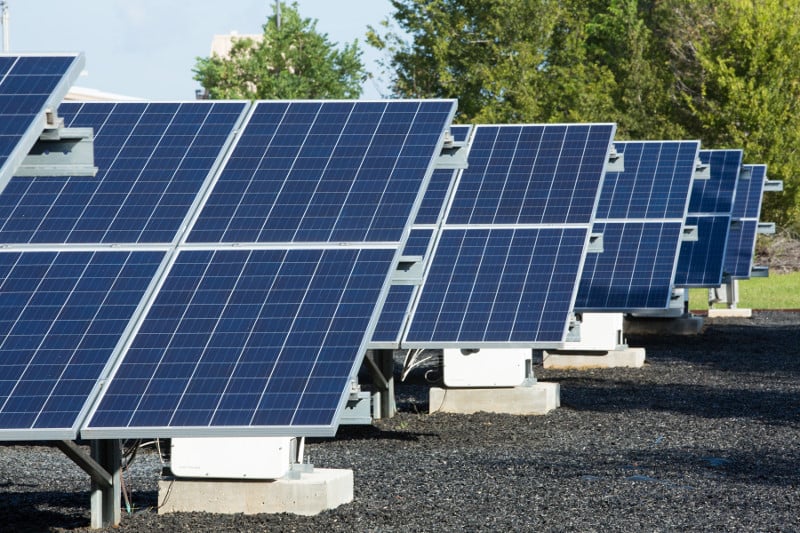
With the continuing threat of wildfires in California, the state’s regulator has approved a plan to deploy distributed microgrids proposed by investor-owned utility (IOU) Pacific Gas & Electric (PG&E).
PG&E has not only had to accept liability for some of the devastating wildfires that have struck the state in recent years, bringing it to the brink of bankruptcy and full-scale restructuring, but also, in order to reduce the risk of their reoccurrence has since last year begun enacting so-called Public Safety Power Shutoffs (PSPS) of its power lines that go to areas at risk from the fires.
Enjoy 12 months of exclusive analysis
- Regular insight and analysis of the industry’s biggest developments
- In-depth interviews with the industry’s leading figures
- Annual digital subscription to the PV Tech Power journal
- Discounts on Solar Media’s portfolio of events, in-person and virtual
Shutoffs can be of indeterminate length and some sources have told Energy-Storage.news that this could mean weeks or even months of customers losing access to grid electricity. This has stimulated customer interest in distributed battery storage – usually paired with solar PV – leading to utility programmes to support customers in their purchases, providers such as Outback Power to offer discounts to affected customers and the state to add it as a criteria for the California Self-Generation Incentive Program (SGIP). But PG&E has also made microgrid proposals that it claims are “comprehensive and cost-effective” and can mitigate the impacts of PSPS events.
PG&E said the California Public Utilities Commission (CPUC) approved the plans last week. PG&E claims the proposals, through which the utility will reserve 450MW of “temporary mobile generation”, will both mitigate the impacts for PSPS-affected customers and reduce the number of affected customers. PG&E said in a release that microgrids are one tool advocated for in its Community Wildfire Safety Program, which aims to make its electricity supply lines safer with short, medium and long-term measures.
There will be four types of microgrid that PG&E will utilise: microgrids to energise substations of which 63 different substation sites have been selected, temporary microgrids at designated areas where local resources such as medical facilities and pharmacies can stay connected when the grid supply is shut down, backup power microgrids for critical customers including hospitals and finally mobile generation for community resource centres set up specifically to support customers and communities affected by PSPS.
PG&E said that CPUC has also approved its proposed Community Microgrid Enablement Programe, which the utility will use to identify sites where microgrids could be built to support critical facilities or vulnerable customers. PG&E did not stipulate in the recent press release that microgrids will use battery storage, or solar – indeed one diesel generator trade group emailed Energy-Storage.news to advocate for the role of gensets as backup in sustainable microgrids.
PG&E did say that it “intends to model future community microgrid projects on the Redwod Coast Airport Renewable Energy Microgrid”. That project includes solar and battery storage and is currently under construction, expected to be commissioned in December and can be islanded to be independent of the grid. The project combines 2.2MW of PV wth 2.2MW / 8.8MWh of batteries, and does not appear to use diesel for backup although as mentioned, it is grid-connected in normal use.
A new report just published by analysis and research company Guidehouse Insights forecasts that the next 10 years will see 36,938.5MW of energy storage installed for microgrids worldwide, in a market that could exceed US$40 billion in worth by 2029. While energy storage is not essential for microgrids to function, they have emerged as a “popular and valuable component” of many microgrid projects, the report said.
“The markets for both energy storage and microgrids have developed significantly in the last few years thanks to major price decreases and accelerated adoption. Looking ahead, the global market for ESMG is expected to grow rapidly, with total annual capacity additions increasing from 650.4MW in 2020 to 8,633.4MW in 2029,” Guidehouse Insights research analyst Ricardo F Rodriguez said.
Local electricity provider helps commercial customers assess battery storage
Meanwhile, also in California, public electricity provider Sonoma Clean Power (SCP) will offer businesses in its service area free “energy audits” that would include assessment of how suitable battery storage would be for their needs.
In a release sent to Energy-Storage.news yesterday, SCP, which serves homes and businesses in Sonoma County and Mendocino County said it has developed its “Energy Resiliency Audit Program” in response to the threat of natural disasters including wildfires.
“After seeing the impacts that last year’s PSPS events and the Kincade Fire had on our customers, particularly those in the business community who were still being depended on for essential services and goods, we knew there would be a rise in the need for reliable backup power,” Sonoma Clean Power CEO Geof Syphers, said.
“We saw a significant increase in the number of generators being purchased and installed after the first shutoff, which are not ideal when it comes to safety or emissions,” Syphers’ colleague, Nathan Kinsey, who is SCP’s commercial accounts manager, added.
“This programme will help businesses better understand all of their backup energy options, including more sustainable alternatives such as battery storage”.






